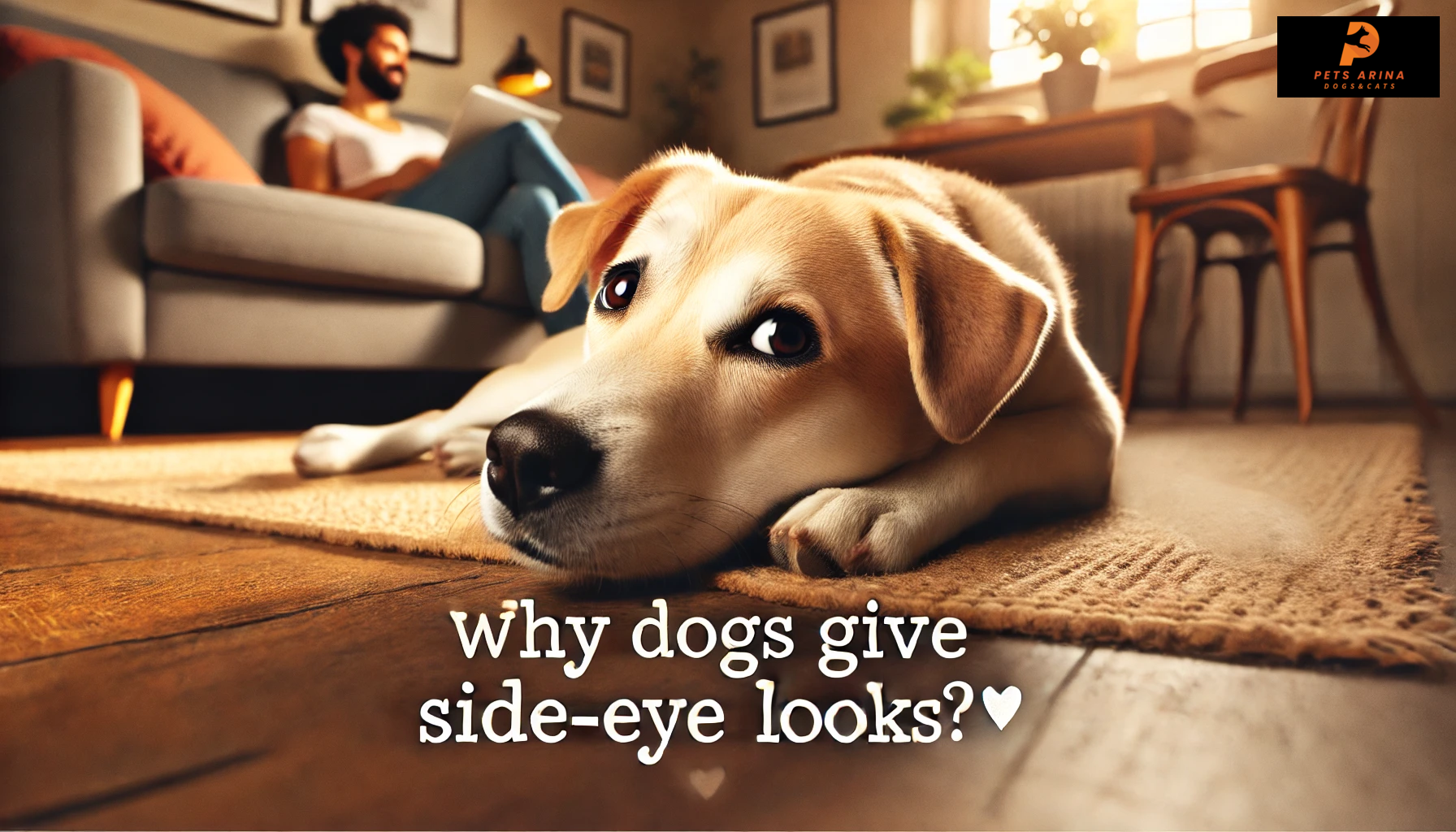When you see your dog giving you a side-eye, what’s happening in its mind? It can be confusing for you. In this article, we’ll explore why dogs give side eye, what it means, and how you should respond.
Dogs express their feelings and intentions primarily through body language, while humans heavily rely on verbal communication. To ensure your pet’s wellbeing and to develop a close relationship with them, it’s essential to understand these non-verbal indications.
What Is the Side Eye in Dogs?
A dog will give you the side eye, sometimes known as “whale eye,” when they look at you or something else and reveal the whites of their eyes. The dog’s body language and context can influence the emotions and messages conveyed by this look.
Common Reasons for the Side Eye
1. Feeling Confused or Nervous
Dogs that are confused or nervous about something may give you the side eye. This may occur when visiting a veterinarian, meeting new people, or coming across strange objects.
2. Protective or Guarding Behavior
If your dog spots something valuable to them, such as a favorite toy or their food bowl, they may give you warning looks to keep you at a distance. This behavior signifies possessiveness and could lead to a further increase in intensity if not handled appropriately.
3. Having fun and getting into trouble
During play, dogs give side eye and initiate games of chase or hide-and-seek by trying to provoke their playmates. They challenge, “Catch me if you can!”
4. Attention Seeking
Your dog might give you the side eye because they want your attention. This may be a humorous way to get their attention if they feel unnoticed.
5. Reading Your Emotions
Dogs are highly sensitive and able to sense your feelings. When you’re upset or angry, your dogs can sense it and give you a side-eye, trying to gauge your mood and respond accordingly.
6. Discomfort During Handling
Dogs don’t enjoy being handled for grooming, vet visits, or cuddling, and they may display the whale eye when feeling uncomfortable or restrained. The dog is unable to escape during nail trimming and hugs. The conflict the dog has between trying to show defensive behavior and having to deal with the discomfort can be seen in the whale eye.
See also: WHY DOES MY DOG PREFER SITTING BEHIND ME ON THE FLOOR?
How to Respond to Your Dog’s Side Eye
1. Stay Calm and Observant: Observe the context and your dog’s body language carefully. Are they relaxed, or do they appear tense? This will help you determine the reason behind their side glances.
2. Provide Comfort: When your dog shows signs of anxiety or nervousness, comfort and reassure them. Speak in a calm, soothing voice and gently pet them to help them feel safe.
3. Respect Their Space: If your dog is guarding something, make sure to give them space and avoid provoking them. Gradually teach them to be more relaxed around their possessions through positive reinforcement.
4. Engage in Play: If your dog gives you playful side eyes, engage in a fun activity with him. Play fetch, tug-of-war, or go for a walk to help burn off some energy and strengthen your bond.
5. Get Expert Help: If your dog frequently gives side eye and exhibits other signs of aggression or anxiety, consult a professional dog trainer or behaviorist for guidance.
See also: MALE DOG BEHAVIOR WHEN FEMALE IS PREGNANT
FAQs
Is the side eye a sign of aggression?
Not necessarily. The side eye may indicate discomfort or protectiveness, but it can also be playful or attention-seeking.
Should I be worried if my dog gives me the side eye?
Giving side eye is normal and usually harmless.
How can I prevent my dog from giving side eye?
Secure your dog, offer numerous positive interactions, and consult a professional if necessary.
Can the side eye indicate health issues?
In rare cases, changes in your pet’s eye appearance or behavior might indicate health problems.
Can a dog’s side eye be a sign of playfulness?
A dog’s side-eye can indicate playfulness or curiosity, but it’s important to observe additional body language signs and take into consideration the context to ensure right translation.

